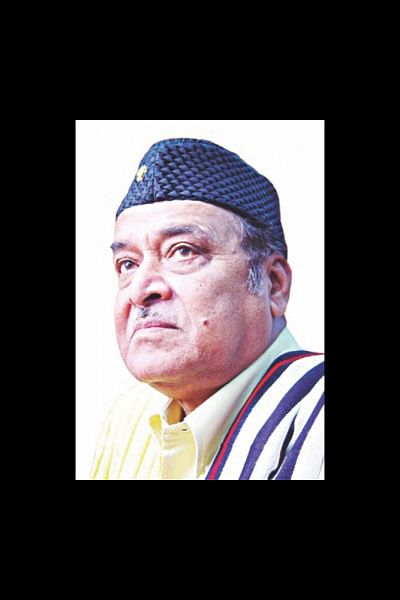Jibonmukhi Gaan

A genre called “Jibonmukhi Gaan” became popular in the early '90s in Bangladesh and West Bengal, India, followed by a controversy over the word “Jibonmukhi” meaning life-oriented, because the other genres then would mean “moronmukhi” (death oriented) or “jibonbimukh” (anti-life).
Whatever the antithesis, the term “Jibonmukhi” was really popular and continues to be so. Bored with love songs or other traditional genres, music lovers naturally grabbed the new style. The name arose from its different wording, selection of subject matter and new style of singing.
Kabir Sumon pioneered this genre in Bangla with the release of his debut album “Tomake Chai” in 1992. He gave us a mixture of singing and recitation, enriched with poetic lyrics. Influenced by American Folk music, Kabir Sumon blended western and Indian tradition. He sang on the same stage as Pete Seeger, wrote the lyrics of “O Gaanwala” inspired by Bob Dylan's famous number “Mr. Tambourine Man”. There are many other influences in his masterpieces. Monologue, nature, nylon-string accompaniments, dramatic twists -- all resemble the nature of western folk that we find in Sumon. Also Bangla folk is present in his songs like “Bashoria Bajao Bashi” and many ones. Satire is in the center of Sumon's lyrics.

Nachiketa Chakraborty, the second mover entered the frame with “Ei Besh Bhalo Achhi”, a depiction of nuisance in and around the society. A ghazal singer in his early life, Nachiketa added classical spices in singing. His “Nilanjona series”, “Jokhon Shomoy Thomke Daraye”, “Anirban”, “Briddhasrom” and lot more numbers ascertain the name “jibonmukhi”.
The path of Sumon or Nachiketa in the '90s was traversed by Lalon centuries ago. Lalon sang in defiance of religious taboos. Dehototto is a popular section in the folk genre that differentiates his numbers from his contemporaries. In fact Lalon pioneered what we are naming “jibonmukhi” today.
Bhupen Hazarika sang about tea garden labourers' miseries in his “Ekti Pata Duti Kuri”. He voiced the hardships of life and many more off-track subjects. He sang “Manush Manusher Jonno”. What can be more jibonmukhi?
Anjan Dutt followed Sumon and was quick to admit that. In 1994 he arrived with his “Shunte Ki Chao”. His blues-type composition with unique style of singing gave him a new identity as a “jibonmukhi' singer, though he is a widely recognised actor.
It is not just about singing; rather it is about relating something to someone, says Pratul Mukhopadhaya. “Jibonmukhi” means picking the subject matter from around us rather than going into esoteric domains. Pratul does not sing, he conveys a message while singing. At times devoid of bits, sometimes off tune, Patul renders a speech in a wise, old man's voice. That is, may be, the best of jibonmukhi.
The author is a freelance contributor to The Daily Star.

 For all latest news, follow The Daily Star's Google News channel.
For all latest news, follow The Daily Star's Google News channel. 



Comments